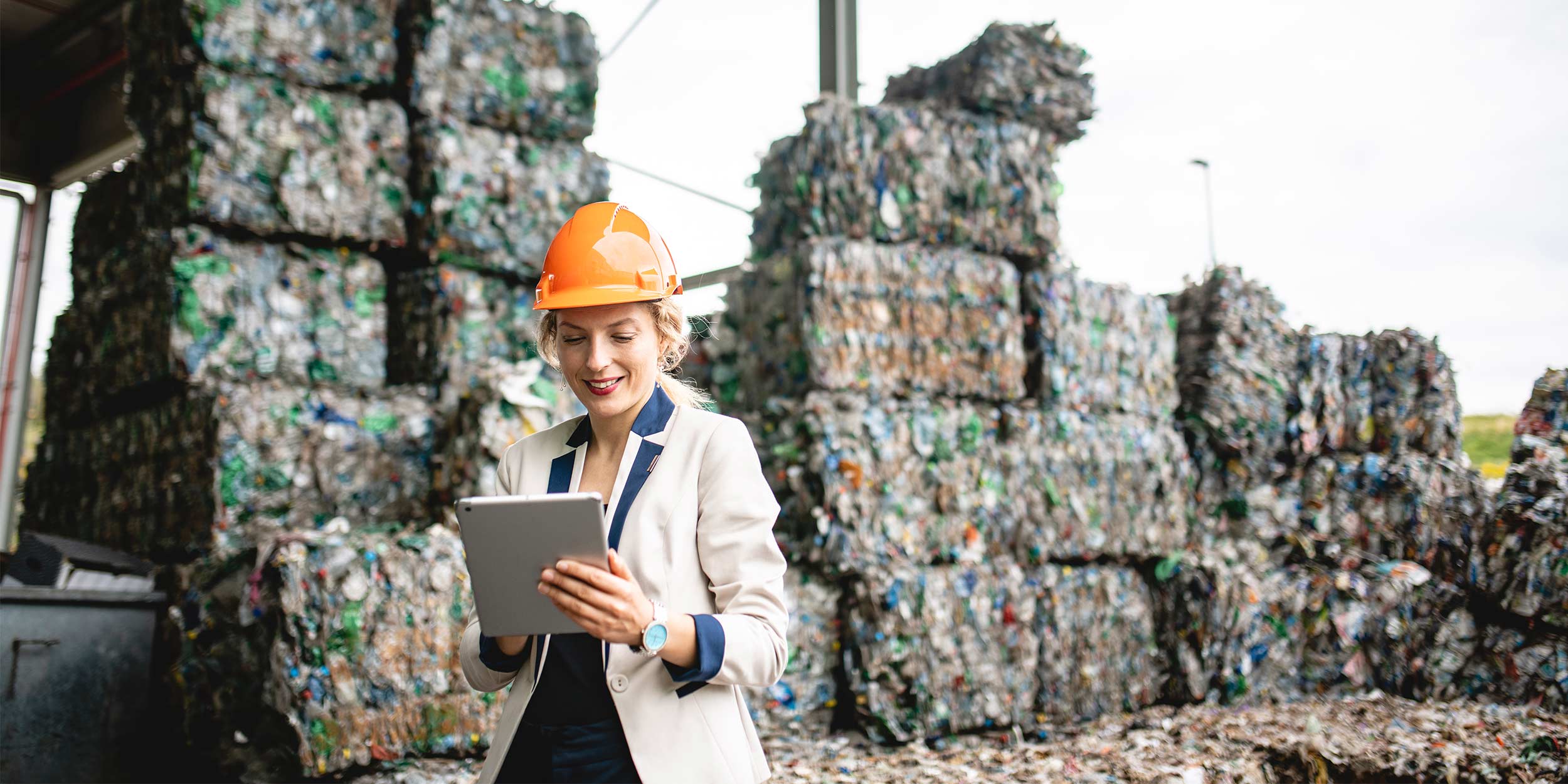Circular economy will help shape risk landscape
SustainabilityArticleOctober 25, 20226 min read
The circular economy will have big implications for risk and insurance, as businesses move to more sustainable products and business models.
The circular economy is coming, and it will represent a big change in how companies manufacture and sell their products. With a growing population and the urgent need to reduce greenhouse gas emissions, society can no longer consume finite natural resources in good conscience.
Essentially, a circular economy shifts economic activity away from consumption of finite resources to sustainability. The concept is based on three core principles: design out waste and pollution; keep products and materials in use; and regenerate natural systems. In practice, the circular economy involves extending the life of a product – through design, quality of materials, maintenance and repairability - and reducing waste to a minimum – by reusing or repurposing materials.
The transition to a circular economy is already underway, although progress varies greatly by region and sector. We see it in recycling, where anything from glass to printer cartridges are now widely reused or recycled and turned into new products. In the fashion industry, there is a growing trend towards hiring or re-selling clothes, while in the electronics industry, concern for finite natural resources – such as rare earth elements – has sparked a drive towards recovering and recycling raw materials from batteries, mobile phones and other devices.
Regulatory nudge
In addition to supply chain security concerns and Net Zero goals, the transition to a circular economy is also being driven by changing consumer and investor expectations, as well as regulation. The EU says it wants to achieve a circular economy by 2050, under wider plans to tackle climate change and address the region’s reliance on finite resources.
The EU’s Circular economy action plan, which is linked to the EU’s Green Deal, proposes a review of construction product regulation, as well as a strategy for sustainable textiles. The EU is also looking to update its legislation on waste management to promote a shift to a more sustainable model, and it is working on an update of the EU's battery directive that would require batteries to be repurposed, remanufactured or recycled at the end of their life.
The European Commission has also announced the establishment of a 'right to repair', which would make it easier for consumers to have goods fixed, as well as require manufacturers to make devices more durable and repairable, for example, by using removable and replaceable parts.
Supply chain security
Increasingly, governments and regulators and industry are turning their attention to the sustainability of supply chains and the security of finite resources. For example, the technology sector is looking to reuse valuable metals – almost 20% of all materials used in Apple products in 2021 were recycled, including gold, tungsten, rare earth elements and cobalt.
Japan has launched a drive to harvest metals from discarded consumer white goods in Asia for reuse in its technology sector. Europe is also introducing new disclosure requirements for sustainability and supply chains. The EU’s proposed Corporate Sustainability Due Diligence Directive would require large companies to identify, prevent, mitigate and account for the environmental impact of their supply chains.
All change in the product value chain
The transition from the linear economy – where products are made, consumed and then thrown away – to a circular economy – where goods are designed and made to last longer – will have a significant impact on business models and supply chains. A circular economy will require a complete rethink of product design, the choice of materials and manufacturing processes, as well as consideration for how products can be repaired, maintained, reused and/or repurposed.
The circular economy will also create opportunities. In some cases, sustainable business models will result in a shift in ownership, from consumers to manufacturers, with the latter offering products as a service. The mining sector is already looking to create secondary markets for recycled materials, while some construction companies now offer materials-as-a-service or take-back schemes, whereby the vendor retrieves materials at the end of their life and recycles or repurposes them.
Risk and insurance
Such changes will have important implications for risk and insurance. Changes to production methods and materials could affect fire and business interruption exposures as well as employers’ liability/workers’ compensation, product liability and recall risks. Organizations will also face changing liabilities related to product labelling or greenwashing claims, as well as ESG-related disclosure for directors and officers and third-party supply chain exposures.
Changes in business models and ownership are likely to drive demand for new insurance solutions, such as more bespoke and creative property/casualty coverages, as well as extended warranty covers, performance guarantees and usage-based insurance. The sharing economy and change in ownership - as consumers hire or lease products, rather than own them outright – could also see some insurance products shift from consumers to manufacturers.
Conclusion
The circular economy is not just another buzz phrase or business trend. It is a growing movement that is closely aligned with a number of today’s big risk challenges, including the transition to Net Zero, environmental social and governance (ESG) and supply chain risk.
Risk managers will need to understand the concepts of the circular economy and appreciate what it could mean for their organization over the coming decades. Risk managers have an important role to play in helping their organizations explore the risk and liability implications of new business models, materials and technology, and help them avoid unintended consequences as they transition to a circular model.
As businesses begin to design and invest in products today that could be around for many decades, early engagement with insurers will be essential. Big changes to products and business models will require a close working relationship with insurers to understand changes to exposures and develop new risk transfer products and risk management services.
Originally published on Commercial Risk Online on October 25, 2022.


